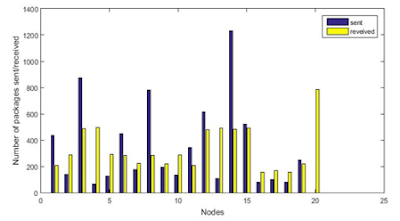This week, the main work is
to finish the design of poster, summarize our works and ensure that each groups
member understand the object and results of the project.
Firstly, the final poster
had been finished and the layout is shown below.
Figure 1: the final
layout of the poster
Then, some flowcharts of
the program is achieved by developer.
Figure 2: the
flowchart of program
From Figure 2, the top
block means the operating environment. In hardware part, some properties of
sensor node such as ID and coordinate are belong to sensorNode class. In addition,
there are some functions for nodes such as add sub-nodes. Meanwhile, there are
three matrices for achieving the systematism of wireless sensor networks (WSNs)
which had been introduced in previous blogs. After forming the system, the sink
is selected according to minimum number of hops. And the function of the sink
is to collect the energy from sensors. Final part is network interface, three
routing protocols calls the transitions between two nodes.
The other flowchart shows
power consumption model.
Figure 3: power
consumption model of WSNs
There are mainly two signal
processing circuits to consume power. First of all, transmission circuit
contains two parts: transmission circuit and power amplifier. The function of
power amplifier is to transmit the signal packets further. Similarly, reception
circuit and low noise amplifier consume energy. The noise is filtered by using low
noise amplifier.
Overall, the object of the
project was generally achieved. Each routing protocol has their own advantages
and the third routing protocol (FLOODING 2.0) has better properties than other
two protocols.
Next week, it is bench
inspection and we need to prepare a presentation. In addition, every group
member does their own works responsibly and best wishes for our group!






